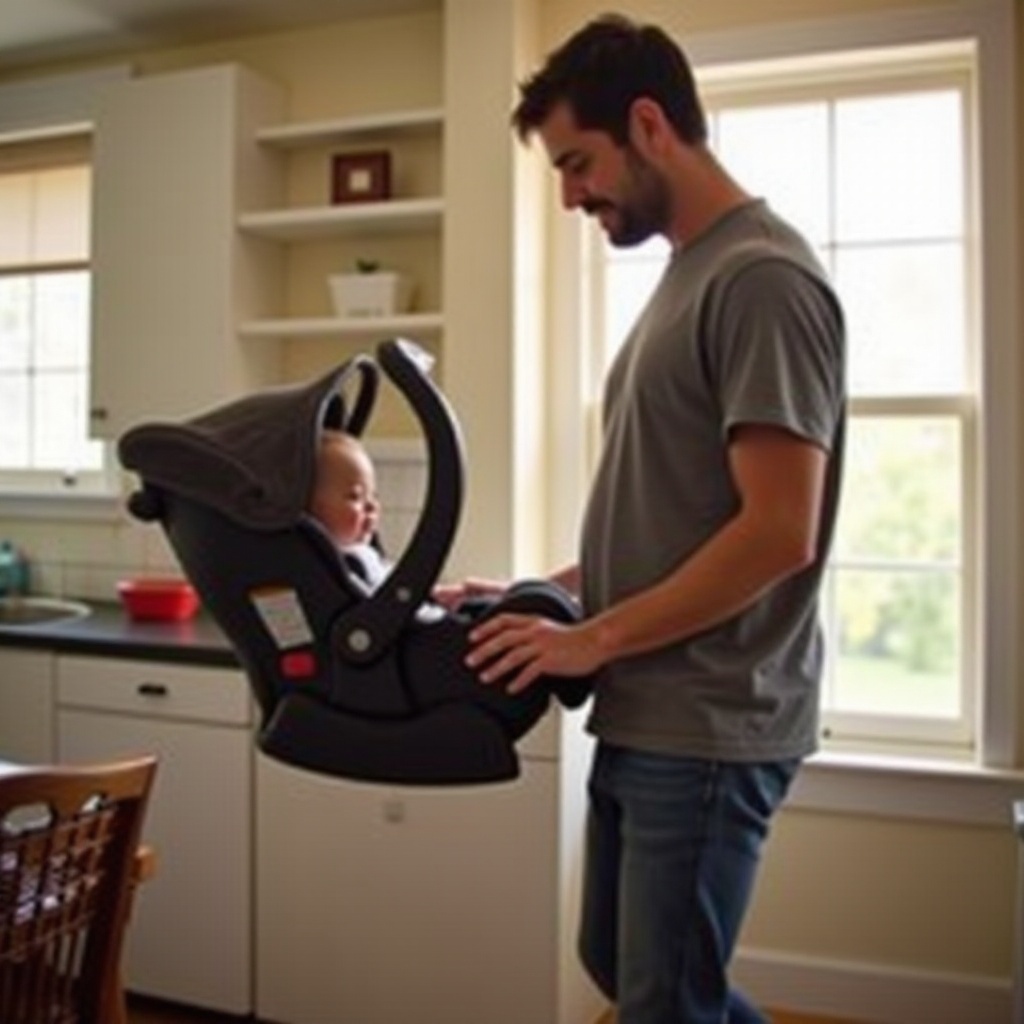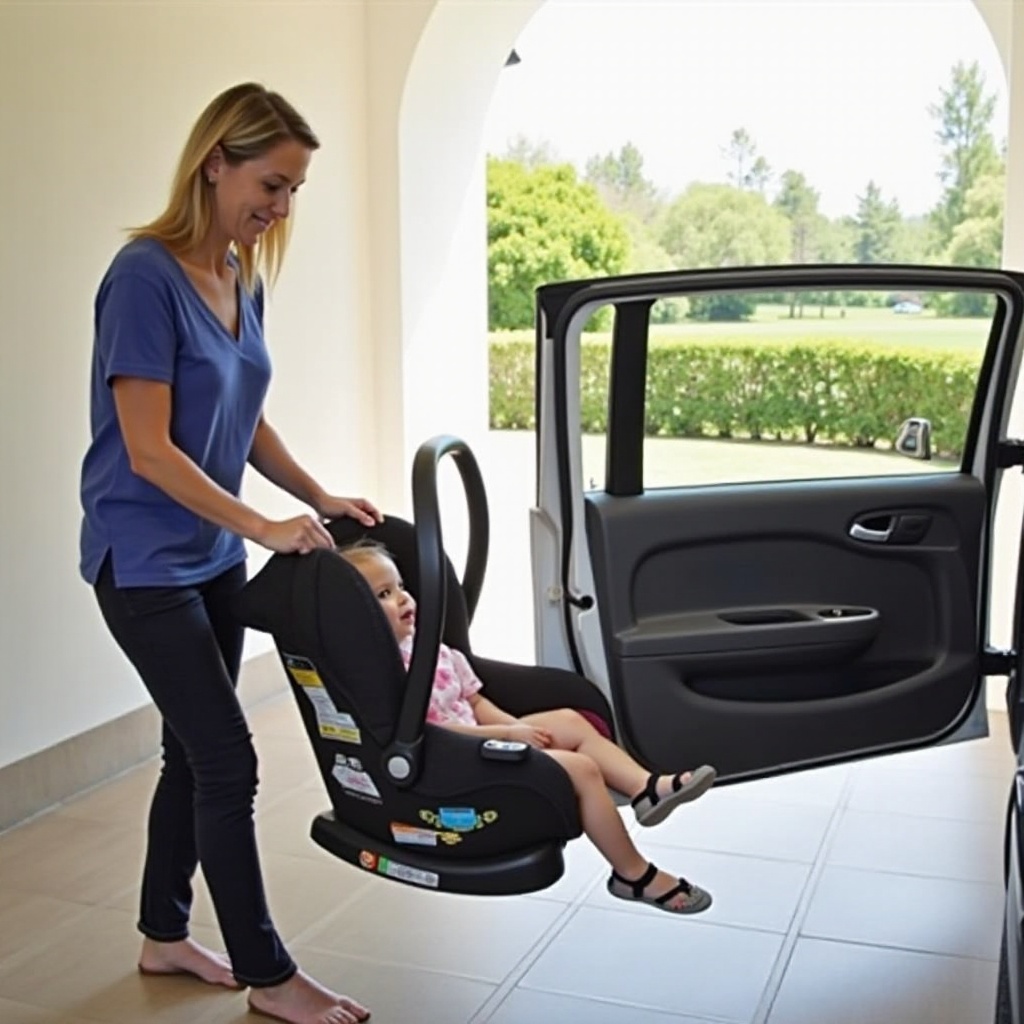Introduction
Caring for an infant involves many critical decisions, and one such task is carrying the infant car seat securely and comfortably. This can greatly affect both the parent’s and the child’s well-being. Whether you’re a new parent or need a refresher, understanding the proper way to carry an infant car seat is essential.
This guide delves into the mechanics of infant car seats, provides a step-by-step approach to carrying them correctly, discusses the importance of ergonomics, identifies common mistakes, and offers real-life testimonials and expert tips. Let’s gear up to make informed choices that ensure safety and alleviate unnecessary strain.

Understanding the Mechanics of Infant Car Seats
Infant car seats are designed to protect your baby during travel, but they’re only effective when used correctly. These seats typically come with a base that remains in the car and a detachable carrier. The carrier has a handle for portability, making it easier to move your baby without disrupting their sleep.
A correctly installed infant car seat keeps your child secure, with harnesses and buckles that ensure protection from sudden jerks or accidents. The seats often include cushioning that provides additional comfort and safety during travel. It’s critical to familiarize yourself with these mechanisms; understanding the proper adjustments and functions of the seat can make all the difference in your baby’s safety.
Knowing how to adjust the seat and harness, and ensuring the base is correctly installed in your vehicle, is the first step towards mastering the art of carrying an infant car seat. This knowledge becomes the foundation upon which you build practical, ergonomic carrying techniques.
Step-by-Step Guide to Carrying an Infant Car Seat Correctly
Carrying an infant car seat without straining yourself or jeopardizing your baby’s safety requires the following steps:
- Check the Handle: Ensure the handle is locked in the upright position. This is the primary grip point when lifting the seat.
- Use Your Legs, Not Your Back: Place one hand on the handle near the top and the other under the base. Bend your knees and squat down rather than bending at the waist. This technique uses your leg muscles—keeping stress off your back.
- Distribute the Weight: Hold the seat close to your body. This reduces the effort your muscles need to keep the seat stable and also minimizes the strain on your spine.
- Alternate Arms: To avoid muscle fatigue, alternate which arm you use to carry the seat. This prevents any one side of your body from bearing the brunt of the strain.
- Use Both Hands: For longer distances, use both hands when possible. Grabbing the handle with both hands provides better control and distributes the weight more evenly.
- Switch to Ergonomic Carrying: Consider carrying the seat with the handlebar facing outward and your arm wrapped around the bottom. It changes the angle of the load and provides a more balanced weight distribution.
By following these steps, you minimize the risk of injury and maintain better control of your baby’s safety seat.
Ergonomics and Your Health
Properly carrying your baby’s car seat can significantly impact your overall health. Poor lifting techniques or incorrect weight distribution can lead to back pain, shoulder strain, and long-term musculoskeletal issues. Here are some ergonomic tips:
- Strengthen Core Muscles: A strong core helps support your back. Engage in exercises that strengthen your abdominal and lower back muscles.
- Invest in Accessories: Certain accessories, like car seat caddies, can help transport the seat more comfortably. A well-designed caddy reduces direct handling time.
- Adjust Posture: When carrying, keep your spine straight and shoulders back. Avoid slouching or bending over, which strains your back.
- Take Breaks: If carrying the seat on a long journey, take frequent breaks to avoid prolonged strain on any single muscle group.
Implementing these ergonomic practices will help reduce the risk of injury and keep you and your baby happy and healthy during daily travels.

Common Mistakes and How to Avoid Them
Carrying an infant car seat improperly can lead to a host of issues. Here are common mistakes parents make and ways to avoid them:
- Using Only One Hand: This can lead to an uneven weight distribution, straining your arm and back. Always use both hands when possible.
- Bending at the Waist: This can lead to severe back pain. Instead, bend at your knees.
- Holding the Seat Too Far from Your Body: This makes it harder to control and increases the strain on your arms and back. Always hold the seat close.
Avoiding these common mistakes will ensure that you carry your infant car seat safely and comfortably.

Real-Life Testimonies and Expert Tips
Parents from various walks of life have shared their experiences on finding the best way to carry an infant car seat. Mary, a mom of twins, talks about the importance of evenly distributing weight and alternating arms to avoid strain. John, a pediatric expert, emphasizes proper posture and the benefits of investing in ergonomic accessories.
Experts recommend regular strength training to build endurance and core stability, which aids in better handling of an infant car seat. Seeking advice from healthcare professionals if persistent pain occurs is also encouraged.
Conclusion
Carrying an infant car seat the right way ensures your child’s safety and your comfort. By understanding the mechanics of the seat, following step-by-step ergonomic guidelines, and avoiding common mistakes, you protect yourself from unnecessary strain and injury. Incorporate expert advice and real-world practices to enhance the ease and effectiveness of transporting your child’s car seat.
Frequently Asked Questions
What is the best way to carry an infant car seat to avoid back pain?
The best way is to use your legs to lift, keep the seat close to your body, and alternate arms when carrying over long distances. Maintaining proper posture is also crucial.
Can an infant car seat be carried in multiple positions?
Yes, it can be carried in multiple positions. The ergonomic position involves the handlebar outward, allowing the weight to be distributed evenly using your forearm.
What are some common mistakes when carrying an infant car seat?
Common mistakes include using only one hand, bending at the waist, and holding the seat too far from your body. All these can lead to discomfort and potential injuries.
